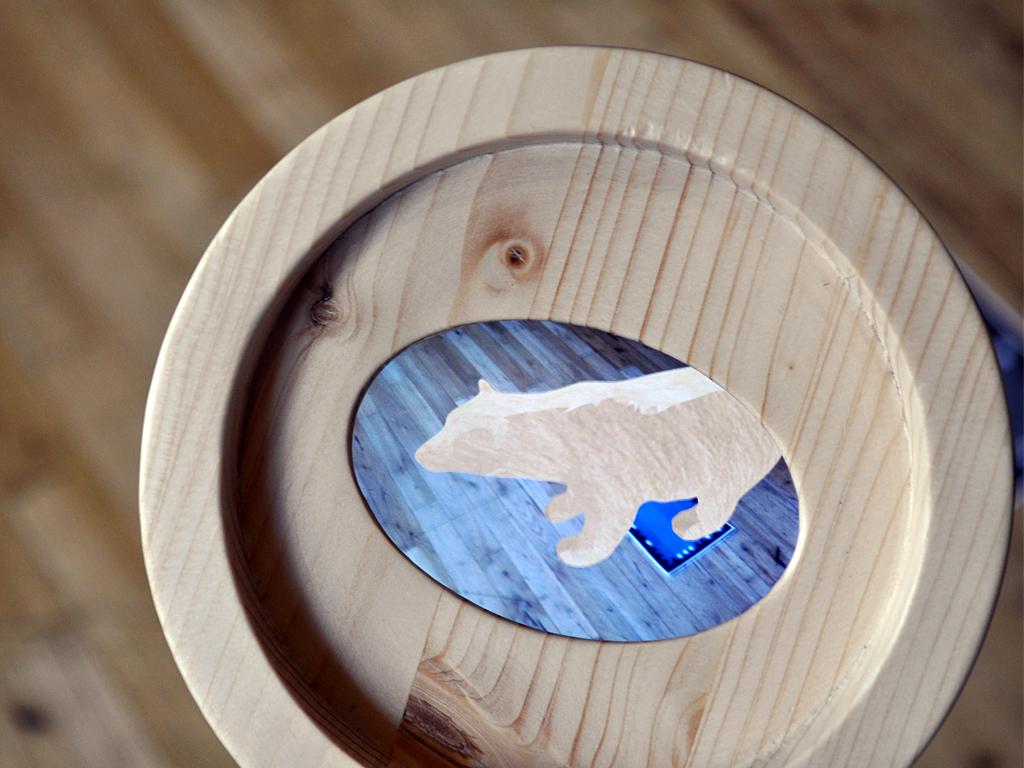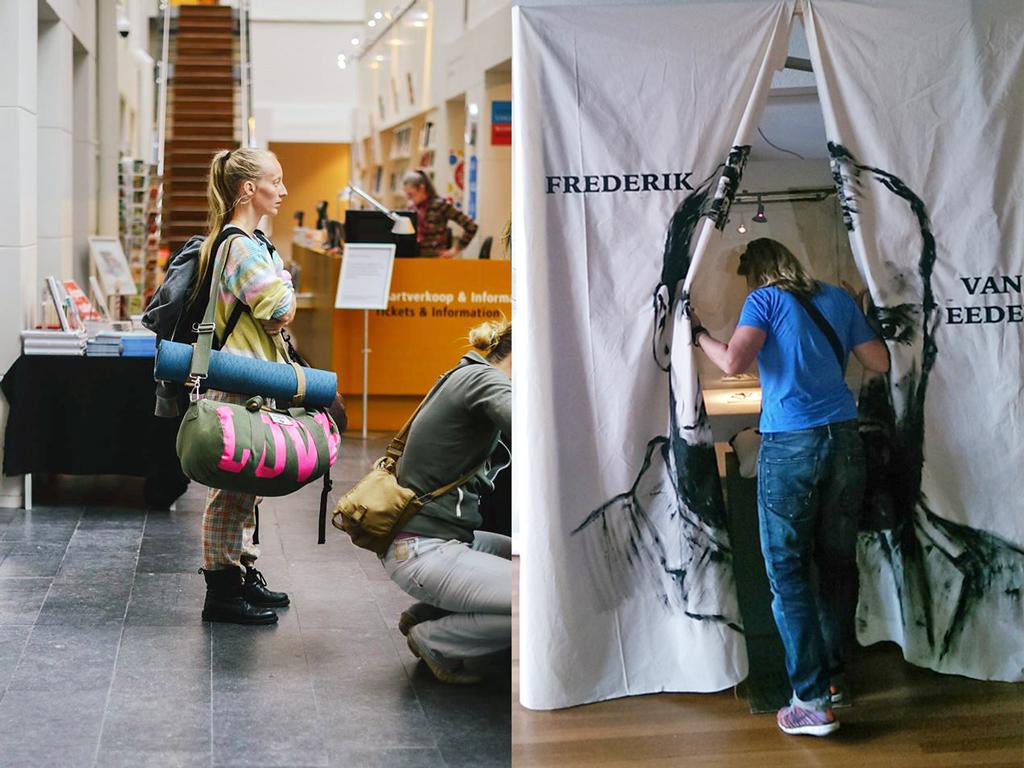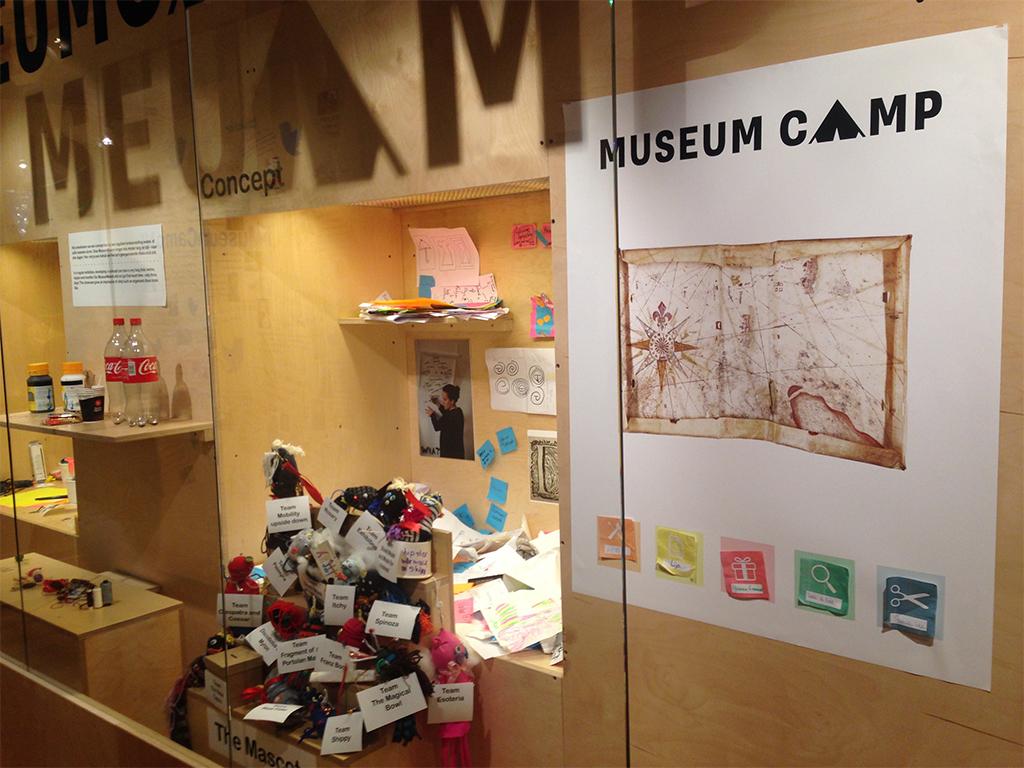Can a magnifying glass add a dimension to a museum visit? Waag, one of the partners in the meSch project, created a prototype of an interactive magnifying glass: a wooden frame with a smartphone hidden in it. It aims at wayfinding on the one hand and at adding contextual layers to an exhibition on the other. The magnifying glass was tested at the museum Museon in The Hague, another partner in the meSch project. This particular interactive smart exhibit is designed specifically for children.
The test took place in an exhibition space dedicated to the Inuit of Greenland. Three pairs of children were involved in the test. So three times, two children were given a magnifying glass each.
A polar bear and seal served as virtual guides, guiding the children with the magnifying glass in the right direction, starting from an arbitrary spot in the museum. When holding the glass above markers on the floor, a polar bear or seal appeared in the magnifying glass. These markers were attached on several spots on the floor, both in the Greenland exhibition space as in the area around this space. The markers outside the exhibition space were only used to lead the children to the objects in the exhibition space. The markers near the objects in the exhibition space activated contextual information about the objects, which was also shown in the magnifying glass.
Each animal led to three different museum objects, which were part of two tiny story lines. Both storylines relate to hunting as a main mean of existence in Greenland, a country that used to be very isolated, without agricultural development or access to raw materials. So, one storyline focussed on the seal, which was not only hunted for its meat, but was also used as a source for the production of items such as clothes, tools and utensils. In the other storyline the central element was the polar bear hunt. In all three tests one child followed the polar bear while the other followed the seal.
In the meSch project a toolkit will be developed that will enable heritage professionals to create smart objects for interactive exhibitions. Concept ideas and prototypes for these smart objects (such as a magnifying glass) are developed and tested throughout the first year, to come to a final exploratory prototype set at the end of the first year of the project. This forms the base for further development and larger case studies in the Museon and the other museums in the meSch consortium.
This is a part of a more extensive blogpost written by Hub Kockelkorn at the meSch website.


